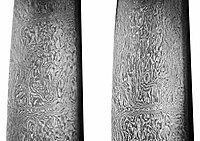
Photo from wikipedia
Abstract Steel slag is being used worldwide for a variety of applications, among which is underwater dyke reinforcement. In the present study the leaching and bioaccumulation of 18 inorganic compounds… Click to show full abstract
Abstract Steel slag is being used worldwide for a variety of applications, among which is underwater dyke reinforcement. In the present study the leaching and bioaccumulation of 18 inorganic compounds from basic oxygen furnace (BOF) steel slag were monitored in marine experimental ecosystems (mesocosms) for 12 wk. Triplicate mesocosms were installed at 2 refreshment rates, one reflecting the situation in the Oosterschelde estuary where BOF steel slag was applied and the other at a 35 times lower rate. Vanadium in both water and biota turned out to be the best tracer for the presence of BOF steel slag in the mesocosms. The mesocosm data helped to interpret the results of a 4‐yr field sampling program in the Oosterschelde estuary where no elevated levels of vanadium in water or biota were found near locations where steel slag was applied. Also, no ecological impact could be established in the field, which was in line with the observations in the mesocosms. The present study shows the added value of a tailor‐made mesocosm study for realistic risk assessment and provides support for applying this tool as a basis for designing efficient field monitoring programs. Environ Toxicol Chem 2021;40:2499–2509. © 2021 The Authors. Environmental Toxicology and Chemistry published by Wiley Periodicals LLC on behalf of SETAC.
Journal Title: Environmental Toxicology and Chemistry
Year Published: 2021
Link to full text (if available)
Share on Social Media: Sign Up to like & get
recommendations!